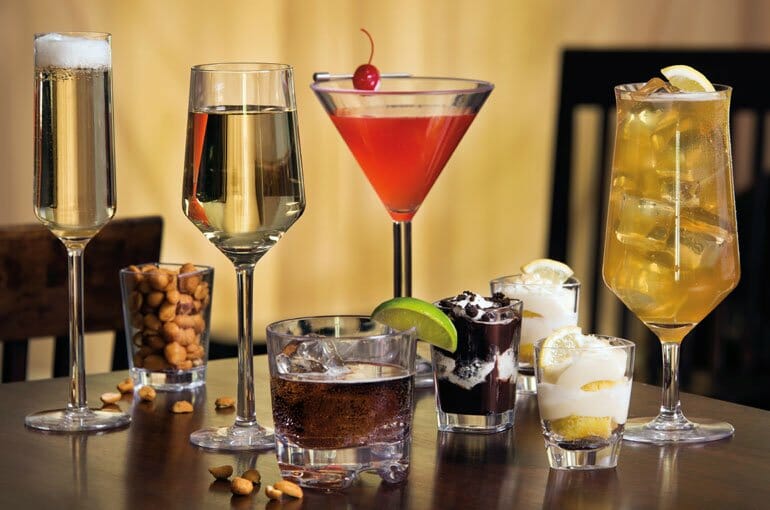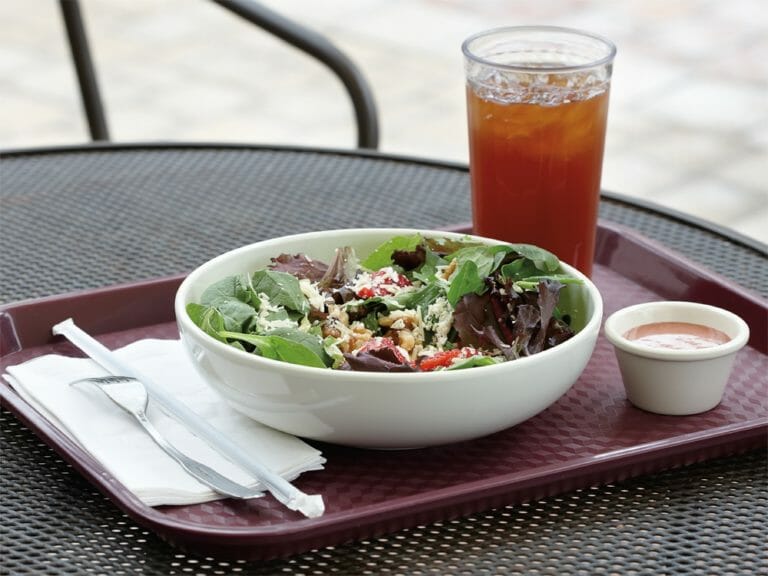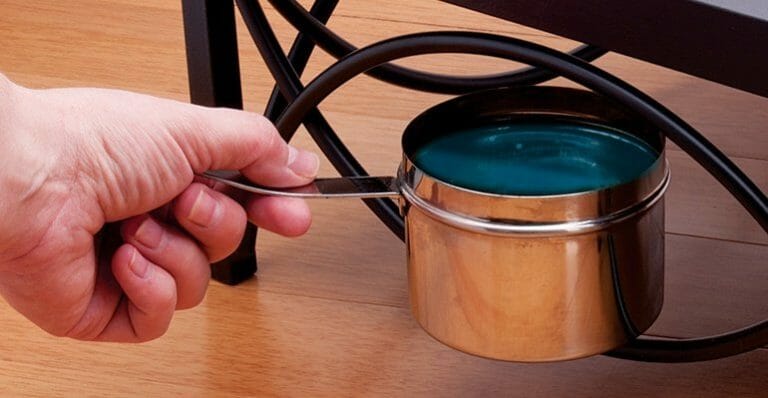Protein Buildup on Plastic Drinkware: Causes, Solutions, Best Practices
It’s no secret that plastic drinkware is one of the most popular items used by foodservice operators. They’re available in a range of styles and sizes, well priced, and typically have a long service life. Regardless of how much love they get from operators and guests alike, there’s still one thing infinitely more attracted to plastic drinkware than people: protein buildup.
Protein buildup, as much as it loves plastic drinkware, is really a bully in your kitchen. It dulls formerly shiny drinkware, or can make crystal clear plastic drinking glasses appear dingy. From a food safety standpoint, this is not an issue. But from a branding and budgeting standpoint, it absolutely is.
While there seems to be a natural attraction between protein buildup and plastic glasses, it’s not a match made in heaven. The good news here is that these two are pretty easy to break up if you follow industry-accepted best practices. We’ll show you some easy ways to avoid protein buildup in your plastic drinkware in the first place, and remedies if it happens anyway.
What is Protein Buildup?
Protein buildup is generally comprised of leftover food particles, grease, excess detergent, and/or hard water minerals that have come into contact with tableware items. It can happen with other materials in foodservice, too, but since we’re experts on plastic drinkware, we’ll keep our focus there. These proteins actually adhere to the surface of plastic drinkware, just like glue or tape, if it’s not cleaned appropriately. Over time, this causes once shiny and clear plastic drinkware to become dull.
At G.E.T., we know the majority of foodservice operators want to keep their plastic drinkware looking new for as long as possible. Protein buildup can happen with all plasticware – it’s not exclusive to drinking glasses. But you don’t have to let it take your drinkware out of service prematurely, which can be expensive, as long as you follow basic care and maintenance best practices.
Protein buildup can happen when inventory isn’t cleaned properly, which includes plastic drinkware and dishwashers. Not to worry. We’ll show you how to get ahead of the game.
How to Prevent Protein Buildup on Plastic Drinkware
Committing to a care and maintenance plan for your plastic drinkware and equipment is your best bet to prevent protein buildup. Best practices include:
- Rinsing plastic drinkware as soon as it comes back to the kitchen
- Gently scrubbing with a soft cloth or sponge to remove any excess food or grease
- Wash using bleach-free detergent in proper compartmentalized drink racks that are not overloaded
- Presoak dishes in bleach-free granulated detergent for about 4 hours (overnight is okay, too) twice a month
- Wash plastic drinkware only with other plastic drinkware – don’t add pots and pans from the kitchen to these wash cycles
- Regularly have a qualified technician inspect your dishwashing system for water temperature and clean filters
- Ensuring your dish water remains clean and consistently changed

Like we mentioned earlier, protein buildup happens over time. It’s not something you’ll see materialize in minutes or over the course of a day. If you do notice that your drinkware is dulling or becoming less clear, you’ll want to treat it right away. Protein buildup can be removed if you tackle it when you first see it. But because it’s a gradual build, if you ignore it at first sight, it will continue to adhere to your drinkware making the situation possibly irreversible. This is why it’s important to keep a close eye on the state of your drinkware.
A real-life example we sometimes see of an operational practice causing protein buildup is washing plastic drinkware with pots and pans from the kitchen. This can happen in small foodservice operations with limited space and/or staff. While that’s certainly understandable, pots and pans typically have the most food residue and grease on them than almost anything else that will go through a dish cycle.
When you include pots and pans in your drinkware washing cycle, it’s like an open invitation for protein buildup to happen. Keeping your plastic drinkware separate from all other dishes and cookware is a big step toward avoiding protein buildup. But definitely stick to all the steps listed above. They work in tandem and won’t do you much good if you follow some and not others.
What to do if You See Protein Buildup on Your Plastic Drinkware
Treat it as soon as you can. This is as simple as repeating a couple of the steps above (or, possibly, executing them for the first time if you previously didn’t have a care and maintenance plan in place).
Soak your plastic glasses in warm water with bleach-free granulated dish detergent for about 4 hours. If it’s easier, you can soak them overnight – four hours is just the minimum amount of time you’ll want to soak. This will help to loosen up the layer of protein on your plastic drinking glasses.
Next, you’ll want to take a soft cloth or sponge and gently scrub your drinkware by hand. You should start seeing some progress on clarity and shine returning to your drinkware. However, one important thing never to do is use harsh chemicals like bleach, or green scour pads or steel wool. All of those items can scratch or further harm your drinkware, sometimes permanently putting you farther back from where you started.

If you begin to see some improvement in the look of your drinkware through these steps, then you can rest assured that protein buildup is the culprit. Keep at it, and you should be able to restore your drinkware to its former glory in no time. If you don’t see any improvement, you may be looking at cloudiness caused by harsh chemicals in your dishwasher. But getting your dish machine regularly inspected should prevent this from happening.
Cloudiness caused by harsh detergents like bleach is actually a chemical change in the plastic that your drinkware is made from. Harsh chemicals combine with plastic creating irreversible cloudiness. Sometimes foodservice operators will see cloudiness start to form and approach the problem with harsh detergents thinking that method will get their drinkware extra shiny. In reality, they may have simply been dealing with removable protein buildup but have now caused permanent cloudiness by not following prescribed best practices.
We recommend always treating any dulling of your plastic drinkware as protein buildup first instead of resulting to harsh chemicals and/or rigorous scrubbing. Doing so puts you in the best position to remedy the situation and avoid causing permanent damage, which can cost foodservice operators unnecessary money and inventory turnover.
If you’re not sure what’s causing your plastic drinkware to lose its luster, you can always count on G.E.T. to help. We have a team of experienced, dedicated folks with the insight to help you navigate issues you may be facing with protein buildup. You can reach us at (800) 727-4500, via email at [email protected], or on our Contact Us page.
We hope, however, that the information here keeps your plastic drinkware looking great throughout its service life. If you’d like to read more in depth about the “why” behind our prescribed care and maintenance, “4 Easy Steps to Extend Plastic Drinkware’s Service Life” is a great read.









